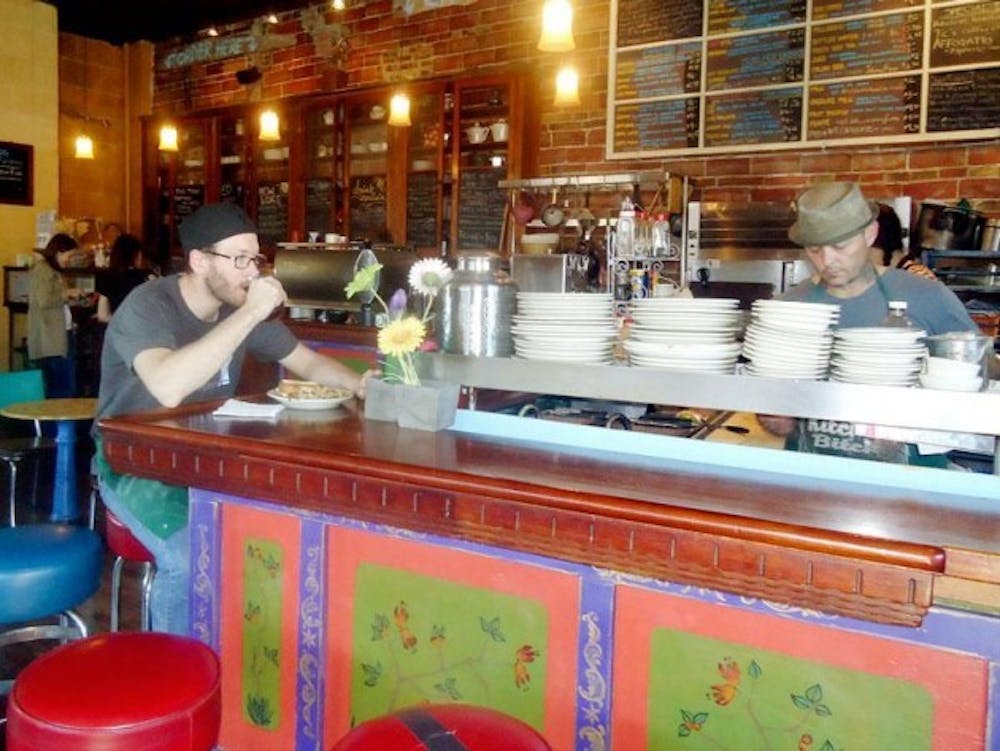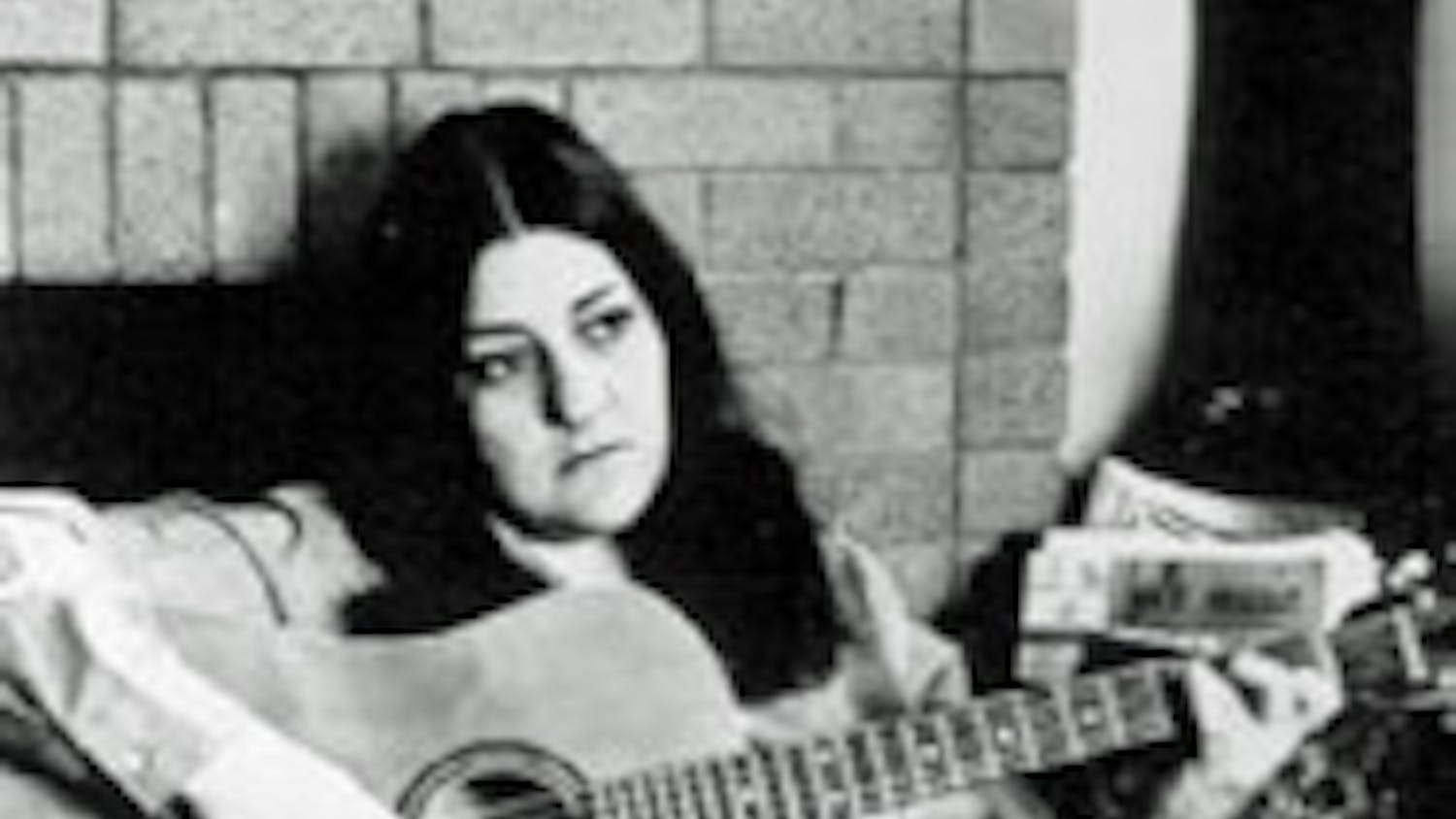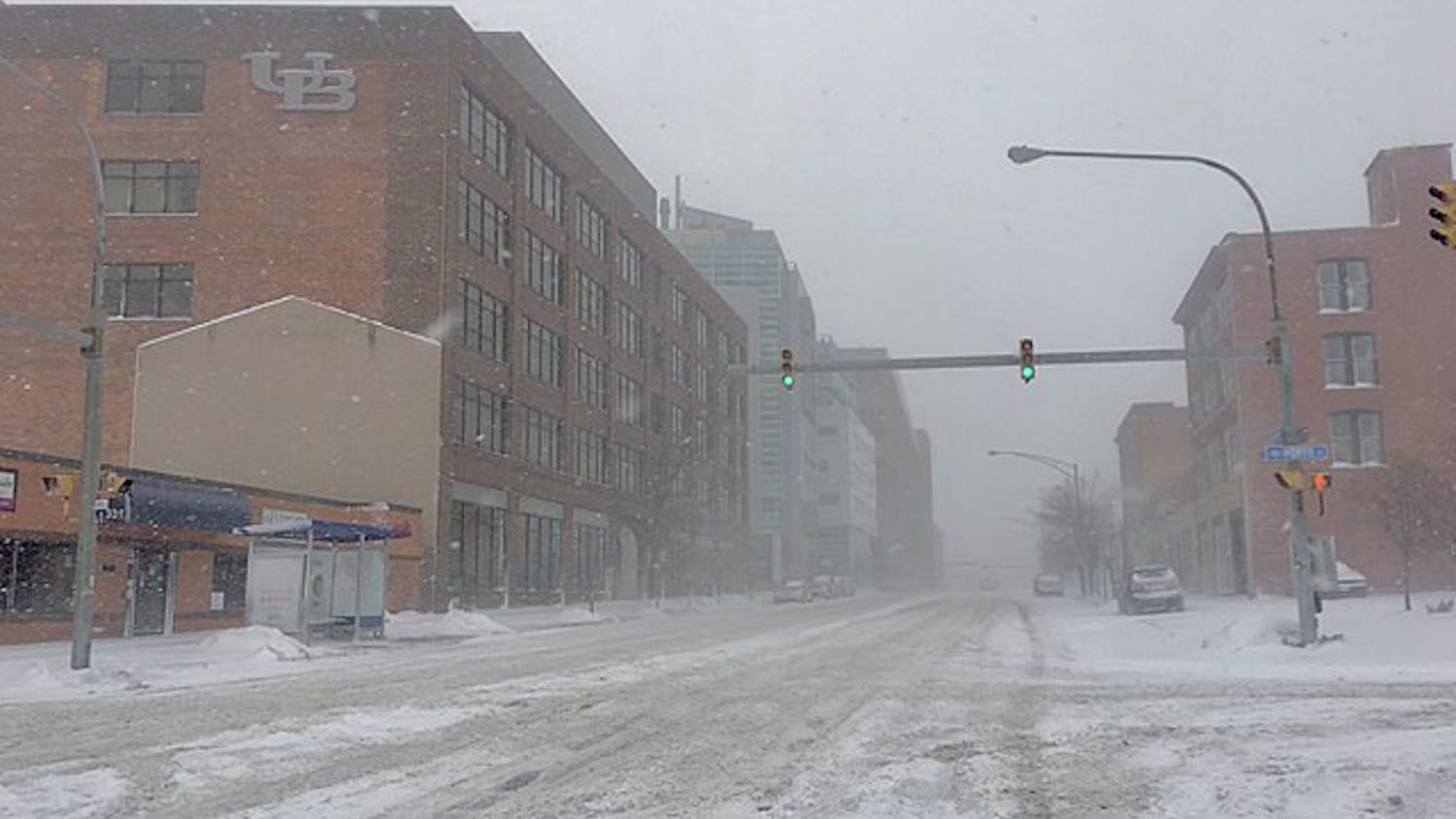The rustic, brown, wooden floor came from an old house on the West Side. The sturdy, high-arching ceiling that forms the infrastructure was once a part of the Art Voice building on Main Street. The teal chairs belonged to the Colored Musicians Club.
Sweet_ness 7 Café has bits of Buffalo built in, and the people inside can feel it.
"It's a feeling of community…you never know exactly who you're going to see in these tight compact communities and that's what draws people and that's what draws me," said David Torke, who authors a blog about preservation and urban issues about Buffalo's East Side.
The café begins and ends with Prish Moran, its pioneer, owner, and muse. The blonde haired, blue-eyed entrepreneur has worked to create a destination spot of the café with her always-cheerful smile. With her hands being the main tool for design, she took a run-down, desolate building and transformed it into an eclectic art space covered in murals she painted.
Moran encourages people from all over the city to come and experience the culture that is present on the West Side. With café-goers ranging from artists and photographers, to politicians and musicians, the diversity and popularity of the café continues to rise. The café has proven so popular that Moran has even opened a second location on Parkside as well.
Although the café is a high-spirited locale now, it was born out of sadness. Moran saw and purchased the haunted house-like building on the corner of Grant and Lafayette just a month after her son was killed in a car crash. Her son had just moved back to the U.S. from Florence, Italy and had bought a house on Parkdale Ave., a block from where the café now stands. Stunned by her loss, she wandered the streets near his house, and was given a sign.
"My mind was able to just feel the sun and the spring," Moran said. "And then the craziness of my mind that I'm able to still look at a building and say ‘Oh what an awesome building. Why is that all boarded up in graffiti?'"
Moran saw the building as a reflection of hope, and a beacon of optimism to go on even after her loss. The building spoke to her and she bought it on a whim. She transformed the building transformation into an embodiment of her hope. Her work has helped transform Buffalo's West Side.
Starting in August 2008, Moran, an artist and restorer, worked every weekday to revamp the building. Enlisting the help of many local craftsmen, retired people, and high school interns, the city was scoured for objects to refurbish the café.
They refinished the floors, and scrapped off the thick black and orange paint that coated the ceilings and walls. The arduous process of removing 60 years of trash helped uncover the building's intrinsic beauty. The work was tedious, Moran said, but it was a cathartic adventure. The café opened that December with an inviting welcome sign.
Almost immediately, the café supplanted a community vibe and became a sensation as one of the hippest cafés in the city. As a result of the successful independent business, the real estate prices of buildings near the café tripled, according to Moran, and realtors use the café as a model for new businesses.
New businesses, such as the Westside Stories bookstore, have opened nearby in the past year because of the luminosity of the revamped area. The increase in people who meander through the West Side, as a result of Moran's endeavor, has acted as a positive catalyst to the area.
"You can't and shouldn't ever have to explain a dream to anybody, but the fact that other people got it immediately and that it's turned into what it is now, I feel extremely blessed," Moran said.
Moran's dream for the café was to provide a European atmosphere. Moran realizes people want to go to Europe to experience history, and Moran wanted to give the café that historical atmosphere. The café building has 100 years of history, and she wanted to make it feel its age. More people are drawn to Buffalo because of the café, and customers tell Moran that they feel like they're in Europe.
"People love this neighborhood because this was the most vibrant part of the city for decades, so many of those people still come in every weekend from the suburbs because they have a great memory of Grant. St.," Moran said. "I'm happy that I was able to create a space that they feel comfortable to come back to."
Along with this style, Moran wants customers to experience eclectic personality, artistic flair, and dedication to her adopted city.
On the wall inside the café, Moran painted a mural of the street outside the window. She also painted the decorated brick, and the colorful floral Tibetan design painted on the bar.
Moran's 14-year-old daughter designed the tables with colorful fabric patterns that make no two tables alike. Each table is its own mini-mural with a compilation of artistic ideas and colors.
Moran wants the café to feel like home and displays pots and pans in cabinets, kitchen supplies in wicker baskets, utensils in mugs, and plates matched with saucers as if one were in their own kitchen.
"I know [people] come here because this is what they believe in," Moran said. "What makes a city rich and colorful and interesting is the arts."
Courtney Imbert, a regular customer who worked for Rich Products on the West Side, comes because it makes her feel part of the community.
"My favorite part about it is the atmosphere because it's a great gathering place," Imbert said.
The workers also add to the positive atmosphere with their jovial remarks and casual manner. They prepare food in an open bar area and talk and joke with customers, and each other. The workers don't just give the food to customers, but they also address people by their names and ask how they're doing. The customers also recognize and talk to each other when they walk in, and the café is the arena for fellowship and the spread of knowledge and news.
"I think it's attracting people to linger in the neighborhood a little bit more and go to places that are within walking distance of the café where maybe they would have just not only have driven by those stores," Imbert said.
Phil Durgan, who has worked at the café since August, believes customers like the local, less commercial, and old world feel of the place.
"I think people really [enjoy] something that's not pretentious. It's not super popular but yet it is still popular; it's got that underground kind of vibe to it," Durgan said. "I think that a lot of people come here because of that."
The food also makes Sweet_ness 7 stand out. Everything from the breads to the quiches to the pastries are organic, and all the meat comes from local, grain-fed animals, with no chemicals used in any of the food. Moran wants customers to know what they eat and to know where their food comes from.
Moran doesn't just want others to buy local to help businesses prosper, but also does it herself. She purchases locally grown and produced food to help local businesses, such as her own, thrive. She purchases a good portion of food for the café from local grocery stores Guercio's and Lorigo, family businesses that have supported the neighborhood for years.
She also believes in community responsibility and is using the café as a meeting point and a way to help others. For instance, she wants to include immigrants who make up a large part of the West Side population.
In 2008, the first Christmas the café was open, Moran started a "Share The Love" fund, which asked café-goers to donate money for immigrants and other disenfranchised people who were trying to establish themselves in Buffalo. The café also collects coats and boots to give to immigrants and shares leftover food from the end of the day. The $12,000 check that is donated from the café does not bear its name. Rather it is signed "love, Buffalo," as proof that the whole city contributes.
As an artist and traveler, Moran looks for inspiration through photography in magazines for new craft ideas. Though she did not know it at the time, the photograph used to paint the mural on the outside of the building depicts the god of happiness, which is also displayed in a holy city in Thailand.
Moran deems the painting of that mural as fate and as the magic of art. She painted it before the café opened and almost immediately after the café opened, immigrants from Thailand and Burma started gathering around it.
As these immigrants noticed her mural, they were overcome with jubilation and tears, rubbing the wall every time they walk by. To Moran it seemed that the mural was a welcome mat for the immigrants' new home, and, specifically for one woman.
"She found a piece of her city in Buffalo and knew she was in the right place," Moran said.
Owning multiple cafés, revitalizing neighborhoods, and charity work is not enough for the ever-dynamic Moran. She is also working on restoring a local church, right next door to the café, into an international food market and bazaar for local immigrants. Moran's goal is for immigrants to gain a sense of hope and to have jobs through cooking their own cultural foods in Buffalo. She realizes it is a difficult plight for newcomers to leave their homelands and start new lives, and wants to give them the opportunity and venue to succeed.
Moran, ever humble, attributes her success to others, never to herself. Her workers, she says, make the café a success. The immigrants and people who help others make giving easy, and her children and workers provide the inspiration. She feels blessed and lucky.
Email: features@ubspectrum.com





